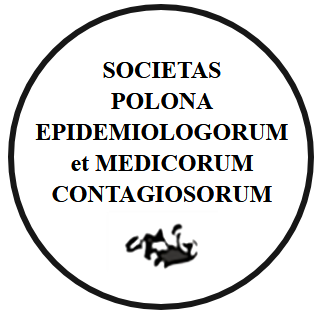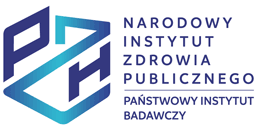Meningitis and encephalitis in Poland in 2021
Publication date: 2024-02-02
Przegl Epidemiol 2023;77(3):387-402
KEYWORDS
ABSTRACT
INTRODUCTION.
Meningitis meningitis and/or encephalitis regardless of etiology are subject to monitoring in Poland as part of routine epidemiological surveillance. In this paper, meningitis and/or encephalitis in 2021 caused by Neisseria meningitidis, Streptococcus pneumoniae, Haemophilus influenzae and tick-borne encephalitis virus are discussed in detail. In Poland, immunoprophylaxis in the form of mandatory or recommended vaccinations is used to prevent diseases caused by the aforementioned etiological agents.
AIM OF THE STUDY.
The aim of this study was to assess the epidemiological incidence of meningoencephalitis and encephalitis in Poland, in 2021 including analysis of the impact of the COVID-19 pandemic.
MATERIAL AND METHODS.
To analyse the epidemiological situation of neuroinfections in Poland, we used data sent to NIPH NIH - NRI by Voivodeship Sanitary and Epidemiological Stations and published in the annual bulletin: “Infectious diseases and poisonings in Poland in 2021” and “Protective vaccination in Poland in 2021” as well as individual epidemiological interviews recorded in the EpiBase system.
RESULTS.
In 2021, a total of 973 cases of meningitis and/or encephalitis were registered in Poland. This is a 16.1% increase in the number of cases compared to 2020, but still a 57% decrease in the number of cases compared to 2019 when 2,249 cases were recorded. For infections of bacterial etiology, including cases of neuroborreliosis, the number of cases increased by 38.3% (from 376 to 520, incidence from 0.96 to 1.76 per 100,000). Compared to 2020 and 2019, the incidence of meningitis and/or encephalitis of N. meningitidis decreased by 10.7% (from 0.13 to 0.15) and 47.4% (from 0.25 to 0.13), respectively, and for H. influenzae by 75% (from 0.01 to 0.03) and 70% (from 0.01 to 0.03). For S. pneumoniae, we can speak of an increase in incidence against 2020 of 57.1% (121 vs 77 cases, incidence 0.32 vs 0.20) and a decrease against 2019. (121 vs 190, incidence 0.32 vs 0.47). Infections of viral etiology accounted for 47% of all registered cases. There was a slight decrease in their number, by 2% (from 462 to 453 cases). In addition, there was an increase in cases of tick-borne encephalitis, from 158 in 2020 to 210 in 2021 (an increase of 32.9%), and a decrease in cases from 265 in 2019 (a decrease of 20.8%).
SUMMARY AND CONCLUSIONS.
2021 showed an overall upward trend in the number of recorded cases of bacterial meningitis and/or encephalitis, and a slight decrease in the number of viral meningitis and/or encephalitis cases compared to 2020. Still, the observed number of meningitis and/or encephalitis cases in 2021, both bacterial and viral incidences, remains below the levels observed in the pre-pandemic COVID-19 period (2019). As a result of the SARS-CoV-2 outbreak, the introduction of measures to limit the transmission of the SARS-CoV-2 virus has been observed to reduce the spread of other droplet- and airborne pathogens, thus also pathogens such as S. pneumoniae, H.influenzae and N. menningitidis.
We process personal data collected when visiting the website. The function of obtaining information about users and their behavior is carried out by voluntarily entered information in forms and saving cookies in end devices. Data, including cookies, are used to provide services, improve the user experience and to analyze the traffic in accordance with the Privacy policy. Data are also collected and processed by Google Analytics tool (more).
You can change cookies settings in your browser. Restricted use of cookies in the browser configuration may affect some functionalities of the website.
You can change cookies settings in your browser. Restricted use of cookies in the browser configuration may affect some functionalities of the website.





